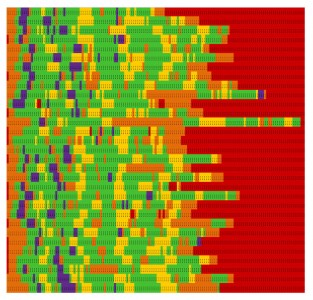Sleep holds secrets - night rhythms not so different than waking rhythms
/ It used to be you'd go to a sleep clinic, stay overnight and get totally wired up to accurately measure your sleep cycles. And that's still the case for sleep apnea and diagnosis of severe sleep problems. I met with a Pulmonologist (a sleep doctor who specializes in breathing) at the Carolinas Medical Center about a month ago to chat about sleep, and was amazed at the sleep charts he sat and showed me on his office computer. You think you're not sleeping.....oh man, there are people with serious problems. More on that soon.
It used to be you'd go to a sleep clinic, stay overnight and get totally wired up to accurately measure your sleep cycles. And that's still the case for sleep apnea and diagnosis of severe sleep problems. I met with a Pulmonologist (a sleep doctor who specializes in breathing) at the Carolinas Medical Center about a month ago to chat about sleep, and was amazed at the sleep charts he sat and showed me on his office computer. You think you're not sleeping.....oh man, there are people with serious problems. More on that soon.
I've been measuring my nightly sleep using an EEG headband for over 6 months, and there is a definite pattern, with much more activity than you'd imagine. It's more ragged with shorter bursts of deep sleep and REM sleep than I thought. I realized night rhythms are not so different than waking rhythms. Nothing holds my attention more than a few minutes... 5-10 minutes of deep sleep and BAM, I'm dreaming....20 minutes later I'm awake. All the deep sleep happens early in the night, with REM (dreaming) sleep three, four, five times during the night. How come I remember none of the dreams? Interesting to get confirmation of how many times I awake during the night.
The excel diagram in this post is 31 nights of EEG measured sleep, using a ZEO - each horizontal stripe is one night, each little numbered box is 5 minutes. Purple is deep sleep, yellow is REM, orange is awake, red is up and active, and green is light sleep....or as the Pulmonologist described, trash sleep. All the good stuff happens during REM and deep sleep. If you're sick, you heal while sleeping, you gain procedural memory during sleep, grow taller, resolve conflict with dreams, and organize memory. Neurologists measure sleep as more active than waking.
To me, the pattern of sleep is the most captivating, it reflects basic organic and human qualities. The proportions of the pattern itself is inherently recognizable and familiar.



